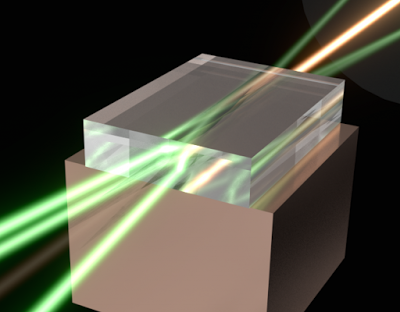
Breaking News
 China Will Close the Semiconductor Gap After EUV Lithography Breakthrough
China Will Close the Semiconductor Gap After EUV Lithography Breakthrough
 The Five Big Lies of Vaccinology
The Five Big Lies of Vaccinology
 Large global study analyzing data from 192 countries has sparked intense debate by suggesting...
Large global study analyzing data from 192 countries has sparked intense debate by suggesting...
Top Tech News
 EngineAI T800: Born to Disrupt! #EngineAI #robotics #newtechnology #newproduct
EngineAI T800: Born to Disrupt! #EngineAI #robotics #newtechnology #newproduct
 This Silicon Anode Breakthrough Could Mark A Turning Point For EV Batteries [Update]
This Silicon Anode Breakthrough Could Mark A Turning Point For EV Batteries [Update]
 Travel gadget promises to dry and iron your clothes – totally hands-free
Travel gadget promises to dry and iron your clothes – totally hands-free
 Perfect Aircrete, Kitchen Ingredients.
Perfect Aircrete, Kitchen Ingredients.
 Futuristic pixel-raising display lets you feel what's onscreen
Futuristic pixel-raising display lets you feel what's onscreen
 Cutting-Edge Facility Generates Pure Water and Hydrogen Fuel from Seawater for Mere Pennies
Cutting-Edge Facility Generates Pure Water and Hydrogen Fuel from Seawater for Mere Pennies
 This tiny dev board is packed with features for ambitious makers
This tiny dev board is packed with features for ambitious makers
 Scientists Discover Gel to Regrow Tooth Enamel
Scientists Discover Gel to Regrow Tooth Enamel
 Vitamin C and Dandelion Root Killing Cancer Cells -- as Former CDC Director Calls for COVID-19...
Vitamin C and Dandelion Root Killing Cancer Cells -- as Former CDC Director Calls for COVID-19...
 Galactic Brain: US firm plans space-based data centers, power grid to challenge China
Galactic Brain: US firm plans space-based data centers, power grid to challenge China
Ultra-pure diamond crystal at the point of convergence combines multiple lasers...

In a world-leading study researchers at Macquarie University have proven a method for multiplying laser power using diamond, demonstrating that a laser similar to the Star Wars 'superlaser' may no longer remain in science fiction.
The research, published in Laser and Photonics Reviews demonstrates a concept – reminiscent of the Star Wars Death Star sci-fi laser – where the power of multiple laser beams is transferred into a single intense output beam that can be directed to the intended target.
This new laser development has real-world and high-stakes applications where high power lasers are seen as a key tool in areas such as defence.
"Researchers are developing high power lasers to combat threats to security from the increased proliferation of low-cost drones and missile technology. High power lasers are also needed in space applications including powering space vehicles and tackling the growing space junk problem that threatens satellites," said co-author Associate Professor Rich Mildren.

 This is why RAM costs so much
This is why RAM costs so much

